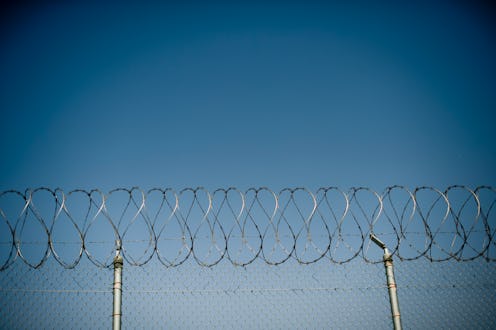News
Could This Solve The Issue Of Over-Incarceration?
At the Academy Awards on Sunday night, during his acceptance speech for the Best Original Song Oscar, John Legend put celebrations aside to remark: "We live in the most incarcerated country in the world." While his statement was made in the context of how deep-seated racial prejudice affects incarceration in this country, the fact resonates on its own. The United States' high imprisonment rate has been a longtime fiscal and social issue, and now certain states are attempting to tackle it. However, instead of doing so at the source — the incarceration stage — some states are psychologically testing inmates for release in an effort to reduce prison populations, according to an investigation by the Associated Press.
Currently, there are dozens of these surveys being used in state prisons, but they are shrouded in secrecy. Through its investigation, the AP was able to find that the tests include extensive questionnaires used to help evaluate whether an inmate should be released. The questionnaires are often made up of more than 100 questions on the inmate's family, education, job status, income, history of residence, and friends' and parents' criminal history. After all questions have been answered, a score is tallied and assigned to the inmate that will help determine their course in the system and possibly lead to their release.
This testing program is part of a national movement to reduce prison populations, lower the rate of recidivism (the act of repeating criminal behavior), and save billions of taxpayer dollars. These assessments are used to determine how inmates are paroled, supervised in the system, and even sentenced. However, the AP found that these tests are far from perfect, and with someone's sentence on the line, not to mention the public's safety, the flaws in the evaluation process could have serious consequences.
The tests, which are used for a range of crimes, from petty theft to murder, lack consistency from state to state. The same defendant could score differently for the same crime depending on which test they are taking. Also, in order for the questionnaires to be effective, the inmate must be completely truthful, but certain answers are difficult to check for accuracy, and other times administrators don't bother checking.
What's more, the tests are designed to be inherently biased toward lower-income inmates, says the AP. Defendants with a history of higher incomes and higher education levels are rewarded with a lower-risk score, which might not accurately predict their likelihood of committing another crime.
On some occasions, the inaccuracies of these assessments led to grave results. In 2013, Darren Vann, a Texas inmate who had been convicted of rape, was undergoing a routine risk assessment upon his release that determined he was at low risk of committing another crime. About a year later, he confessed to authorities in Indiana that he had killed seven women. Incidents like this are one of the main reasons these evaluations are kept a secret, so that government officials won't be held accountable when they're inaccurate.
On the other side of the argument, advocates of the tests claim that when used correctly, they are accurate more than 70 percent of the time. Adam Gelb, director of the Pew Charitable Trusts' Public Safety Performance Project, told the AP:
Risk assessments, particularly ones that have been validated, show enormous potential in being able to distinguish meaningfully between offenders who are at high risk, medium risk, and low risk for reoffending.
Advocates hope that this enormous potential could make a dent in the country's even more enormous prison population. Going back to the factoid that John Legend dropped at the Oscars, the United States does indeed have the highest incarceration rate in the world. As of 2012, the prison population in the U.S. was 2.23 million people, which is about .7 percent of the U.S. population and 22 percent of the world's prisoners.
Some reports have shown that as of 2014, there has been a decline in incarceration in the U.S., but since there's no transparency in these assessments, it's difficult to tell whether they've contributed to it. If states are serious about reducing their prison populations, it would probably be in their best interest to release the information — especially if they're as effective as advocates claim they are — so that experts can better evaluate all the tools we have at our disposal to solve the significant problem that is over-incarceration.
Images: Getty Images (4)
